Try GOLD - Free
Whose Police Is It Anyway?
Outlook
|January 27, 2020
On January 14, the Delhi Police got a few admonitory lessons from Tis Hazari judge Kamini Lau.

“Have you read the Constitution?” Lau asked, as she tore into them for arresting Bhim Army chief Chandrashekhar Azad in connection with anti-CAA protests, and for behaving as if “Jama Masjid is in Pakistan”. (She granted him bail the next day—although clouding the trail a bit by telling him to stay off Delhi and not “interfere” in its elections.) The focus here, however, is not Azad. It’s how the police—as an institution, as the most visible instrument of law—seem all too often to occupy a space far away from the ideal. Which is, working for the citizenry, securing their pursuit of legal freedoms in a hugely unequal, violent society. Something else Judge Lau said—that Section 144 of the CrPC cannot be used as an instrument of repression—offers a clue. The structure of power in which the police are embedded is still that of the colonial era, where the people are seen as the enemy.
Scan, in your mind, the images of brute police force in Jamia Millia Islamia, including inside its library. (That this helped ‘nationalise’ the anti-CAA protests only showed what Indians thought of it.) Contrast that with its mute inaction as a masked mob ran amok in JnU. And later, a transparent lack of impartiality as DCP Joy Tirkey listed the accused at a press conference—naming Left-affiliated students (who bore enough signs of being victims in that episode), and a conspicuous silence on the ABVP. Fan out to Lucknow, where the arrest and torture of Sadaf Zafar only crowned charges of a reign of communally motivated brutalities across mofussil UP. Mangalore police in Karnataka invited charges of a similarly violent partisanship.
This story is from the January 27, 2020 edition of Outlook.
Subscribe to Magzter GOLD to access thousands of curated premium stories, and 10,000+ magazines and newspapers.
Already a subscriber? Sign In
MORE STORIES FROM Outlook

Outlook
From Margins to Mainstream The Inclusive Growth Story
Haryana leads the way in welfare reforms with schemes imaginatively redesigned to support the vulnerable — women, students, workers, and the marginalised
4 mins
December 01, 2025
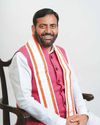
Outlook
One year of Saini Govt. marked by holistic and inclusive governance, social welfare
75 percent of promises kept and worked upon in one-fifth of tenure
4 mins
December 01, 2025
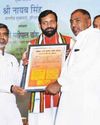
Outlook
Nurturing Urban Dreams on Rural Foundation Haryana's Housing Push Gains Pace
Haryana has redefined housing development with equity at its core. Through 'Housing for All', the state hasn't just built structures, it has rebuilt lives. From makeshift shelters to permanent homes marks a powerful journey on the road to social uplift and inclusive growth
3 mins
December 01, 2025
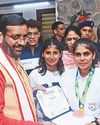
Outlook
Haryana, The Medal Factory, Powering India's Olympic Dreams
Haryana has risen as the undisputed powerhouse of Indian sports, blending grassroots talent, world-class infrastructure, and visionary policies
2 mins
December 01, 2025

Outlook
No Woman's Land
The Left parties, which champion women's representation and empowerment, fielded only one woman among their 33 candidates in the Bihar election
6 mins
December 01, 2025
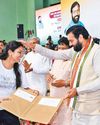
Outlook
Dignity With Jobs Youth Take the Centre Stage
Over four lakh job-seekers connected, thousands trained, and a generation empowered -- technology, transparency, and training redefine Haryana's employment landscape
2 mins
December 01, 2025
Outlook
Haryana Means Business; Here, Policy Meets Progress
Haryana is redefining industrial growth with investor-centric policies, cutting-edge digital governance, and infrastructure – making it a top destination for innovation, ease of business, and investment
3 mins
December 01, 2025
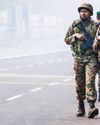
Outlook
Guarding Those Who Guard Us Haryana's Bold Vision for Soldier Welfare
With enhanced financial aid, medical grants, and priority for Agniveers in state jobs, Haryana is championing long-term opportunity and security for soldiers, ex-servicemen, and patriotic youth across the state
3 mins
December 01, 2025

Outlook
Lighting the Way with Clean Energy and People-Focussed Reforms
Haryana has transformed its power sector through a combination of rapid electrification, clean energy initiatives, and people-focussed reforms
3 mins
December 01, 2025

Outlook
Policing With A Human Touch Haryana's Tech-Led Transformation
From AI-enabled emergency response systems to pioneering forensic setup, from women's safety initiatives to cybercrime crackdowns, Haryana is setting new standards in technology-driven governance and public safety
3 mins
December 01, 2025
Translate
Change font size

